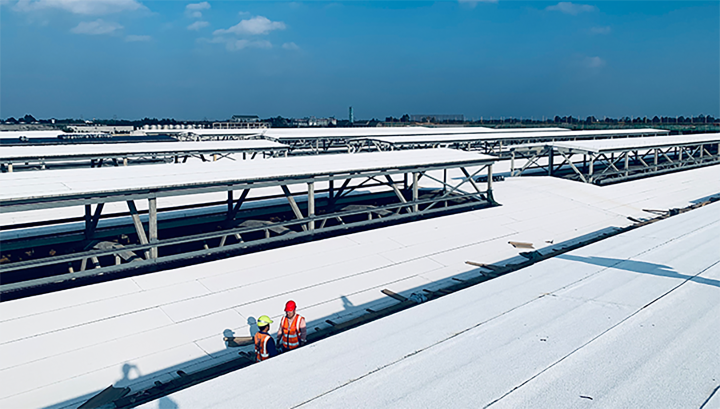
Tach . 27, 2024 15:30 Back to list
Benefits and Features of Asphalt Roofing for Your Home Improvement Projects
Understanding Asphalt Roofing Benefits and Installation Guide
Asphalt roofing is one of the most popular roofing materials used in residential buildings. Known for its durability, affordability, and ease of installation, asphalt roofing comes in various forms, primarily asphalt shingles and roll roofing. This article will delve into what asphalt roofing is, its benefits, types, and installation processes to help homeowners make informed decisions for their roofing needs.
What is Asphalt Roofing?
Asphalt roofing refers to roofs that utilize asphalt as a primary material, primarily in the form of shingles or rolls. Asphalt shingles are composed of a fiberglass or organic felt base saturated with asphalt, coated with granules that provide color and offer UV protection. Roll roofing, on the other hand, comes in large sheets that are typically used for low-sloped roofs.
Benefits of Asphalt Roofing
1. Affordability One of the biggest advantages of asphalt roofing is its cost-effectiveness. It is typically less expensive than other roofing materials like metal, tile, or wood. This makes it a popular choice for budget-conscious homeowners.
2. Variety Asphalt shingles come in various styles and colors, allowing homeowners to choose a look that complements their home’s architectural style. Whether you prefer the classic appearance of three-tab shingles or the dimensional look of architectural shingles, there is an asphalt option for everyone.
3. Ease of Installation Asphalt roofing is relatively easy to install, requiring less labor than some other roofing materials. This not only saves on labor costs but also shortens the time required to complete the roofing project.
4. Durability While asphalt roofing may not be as long-lasting as materials like metal or slate, it can provide a lifespan of 20 to 30 years with proper installation and maintenance. Most asphalt shingles are designed to withstand various weather conditions, including heavy rain, wind, and even hail.
5. Energy Efficiency Many asphalt shingles come with reflective granules that minimize heat absorption, contributing to lower cooling costs in summer. Additionally, they can be installed with proper ventilation to further enhance energy efficiency in homes.
Types of Asphalt Roofing
asphalt roofing

1. Asphalt Shingles This is the most common type of asphalt roofing, available in two main varieties—three-tab shingles and architectural shingles. Three-tab shingles are flat, lightweight, and typically less expensive. Architectural shingles are thicker and provide a more textured appearance and better durability.
2. Rolled Roofing Usually used for low-slope roofs, rolled roofing is easy to install and is often utilized in commercial buildings and sheds. It comes in large, continuous rolls, making it a quick solution for covering significant areas.
3. Self-Adhering Membranes These are typically used as underlayment or for low-slope roofs to provide waterproofing. They adhere directly to the roof deck, offering an added layer of protection against water infiltration.
Installation Process
The installation of asphalt roofing should ideally be handled by professionals to ensure durability and efficiency. However, understanding the basic process can help homeowners communicate effectively with their roofing contractors.
1. Preparation Before installation, the existing roof may need to be removed if it’s damaged. The roof deck should be inspected for rot or damage, which should be repaired prior to new material installation.
2. Underlayment A water-resistant underlayment is applied over the roof deck to provide a barrier against moisture.
3. Installing Shingles/Roll Roofing If using shingles, they are laid starting from the bottom edge of the roof, overlapping each row to direct water downwards. For roll roofing, it is unrolled and secured per manufacturer specifications.
4. Flashing and Ventilation Flashing is installed around chimneys, vents, and other penetrations to prevent water leaks. Adequate ventilation is crucial to prolonging the roof’s lifespan by reducing heat and moisture accumulation.
Conclusion
Asphalt roofing offers an appealing combination of affordability, variety, and durability, making it a top choice for many homeowners. With the right installation and maintenance, asphalt roofs can provide reliable protection for your home for decades. When considering a new roof, understanding the advantages of asphalt roofing can help guide you toward a sound investment for your property.
-
Roofing Granules for Sale | Restore Shingles, Boost Cooling
NewsAug.10,2025
-
Durable Milan Stone Coated Metal Roof Tile | Elegant Roofing Solution
NewsAug.09,2025
-
Mosaic Shingles: Style, Durability & Shingle Comparisons
NewsAug.08,2025
-
Explore Types of Roof Shingles: Durable Asphalt & More!
NewsAug.07,2025
-
Architectural Asphalt Shingles | Laminated & Durable
NewsAug.06,2025
-
Premium Stone Coated Metal Roof Tiles | Spain Tile
NewsAug.05,2025







